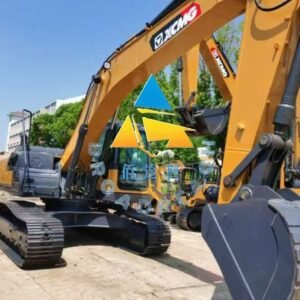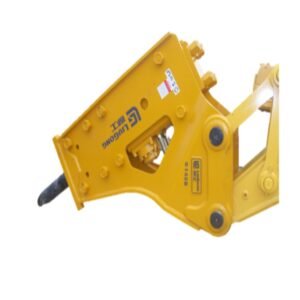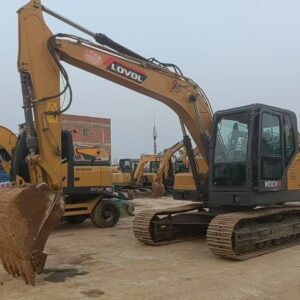BroadReach Construction Machinery Co., Ltd

The Basic Parts of a Used Excavator: A Comprehensive Guide
When considering the purchase of a used excavator, it’s essential to understand its basic components to ensure you’re making an informed decision. Excavators are powerful machines designed to perform a wide range of tasks, from digging and lifting to demolition. By breaking down the key parts of an excavator, you can evaluate its condition and know what to look for when buying a used one.
Here’s a look at the main parts of a used excavator:
Table of Contents
1. The Boom
The boom is the long arm extending from the main body of the excavator. It allows the excavator to reach great heights or depths, making it essential for digging and lifting heavy loads. When inspecting a used excavator, check for any cracks or signs of wear on the boom, as it endures a lot of stress during operation.
2. The Arm (Stick)
Attached to the boom, the arm (also known as the stick) is responsible for providing additional reach for digging or lifting operations. It’s a critical part that adds flexibility to the machine’s movements. Ensure that the arm is not bent, cracked, or showing signs of excessive wear when evaluating a used excavator.
3. The Bucket
The bucket is one of the most recognizable parts of an excavator, and it’s typically used for digging, scooping, and lifting materials. It comes in various sizes and shapes depending on the task at hand. Inspect the bucket for any dents, cracks, or severe wear, especially on the teeth, as these can affect its performance.
4. The Undercarriage
The undercarriage is the base of the excavator and includes the tracks, rollers, and sprockets. It’s crucial to ensure the undercarriage is in good condition, as it supports the entire weight of the machine. Look for signs of wear on the tracks and rollers, as well as any issues with the sprockets or suspension.
5. The Track System
Excavators generally use tracks instead of wheels for better stability and performance on uneven terrain. The track system includes the tracks, track rollers, and idlers. When buying a used excavator, check for any damage to the tracks, as replacing them can be costly.
6. The Cab
The cab is where the operator controls the excavator. It’s important for comfort and safety, with features like controls, air conditioning, and a visibility system. Inspect the cab for any damage or wear, especially to the controls and windows. Ensure that all safety features, like seat belts and mirrors, are intact.
7. The Hydraulic System
Hydraulics are responsible for powering the excavator’s movements. The hydraulic system includes pumps, valves, and cylinders, all of which play a critical role in lifting, digging, and rotating. When purchasing a used excavator, ensure that the hydraulic system is leak-free and operating smoothly, as hydraulic repairs can be expensive.
8. The Engine
The engine is the heart of the excavator. It powers the machine and allows it to perform its tasks efficiently. Check the engine’s condition, including the oil levels, filters, and belts. A well-maintained engine will improve the overall longevity and efficiency of the excavator.
9. The Swing Mechanism
The swing mechanism allows the upper part of the excavator (the house) to rotate 360 degrees. This feature is essential for digging in tight spaces or around obstacles. Ensure the swing mechanism is functioning properly by checking for smooth rotation and listening for any unusual noises.
10. The Control System
The control system includes all the levers, pedals, and joysticks that control the excavator’s movements. A well-maintained control system ensures precise movements and allows the operator to work safely and efficiently. When buying a used excavator, ensure that all controls are responsive and free of malfunctions.
Conclusion
When purchasing a used excavator, understanding its basic components is crucial for making a smart investment. The key parts to consider include the boom, arm (stick), bucket, undercarriage, track system, cab, hydraulic system, engine, swing mechanism, and control system. By carefully inspecting these parts, you can ensure the excavator is in good condition and will continue to perform reliably for years to come.
Whether you’re looking for a used excavator for digging, lifting, or construction, make sure to take the time to evaluate these essential components. Always consult with a trusted technician to assess the overall condition of the machine and get the best value for your investment.






